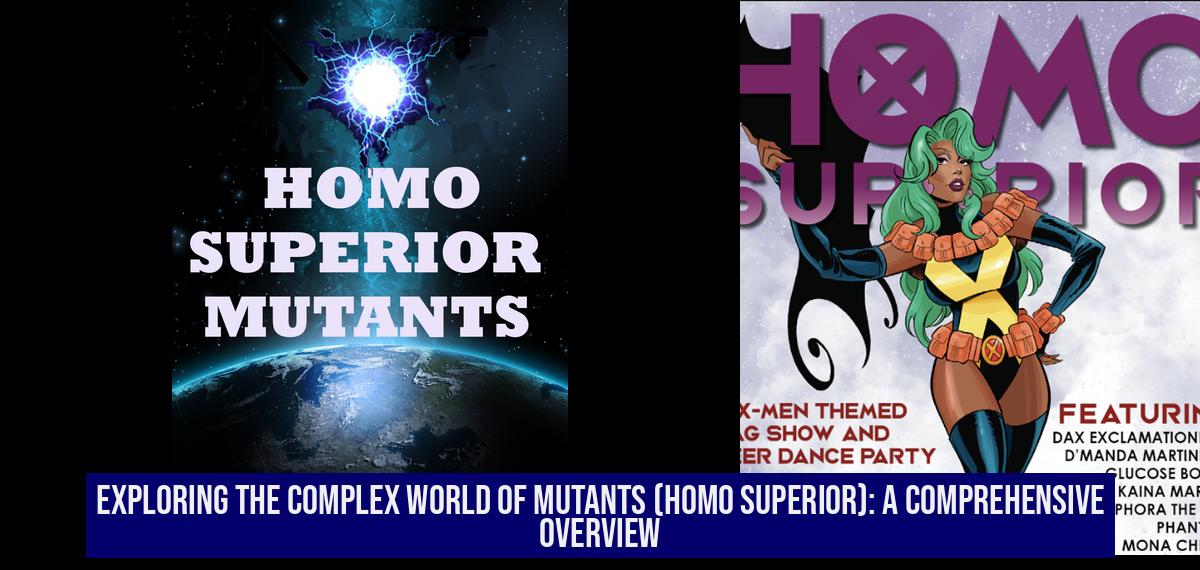Mutants (Homo superior) Wiki Unraveling the Enigma of Mutants (Homo superior)
Mutants, scientifically categorized as Homo superior, represent an extraordinary evolution of human beings due to a unique genetic alteration known as the X-gene, which unlocks a varied array of superpowers. This mutation not only sets them apart from baseline humans but situates them at the heart of popular culture, political dialogues, and profound ethical debates. The rich history and complex attributes of mutants forge a captivating narrative filled with diverse powers, biological intricacies, social dilemmas, and a vibrant culture.
A Deep Dive into History
The origins of mutants, rooted in both mythology and extensive storytelling, are often traced back to the Celestials in the Marvel Universe. These god-like entities reportedly manipulated the genetics of early humans, leading to the activation of the X-gene in select individuals. The first mutants began to emerge around the post-World War II era, igniting societal fears and awe. This historical context sets the stage for understanding the struggles mutants face in a world often fraught with discrimination and existential threats.
Exploring Powers and Abilities
Mutants possess a broad spectrum of powers, drawing from their unique mutations. While some mutants exhibit extraordinary abilities—such as telepathy, superhuman strength, or elemental control—others display more individualized powers which can range wildly in their applications. The versatility of these powers leads to the classification of mutants into various tiers, with Omega-level mutants being at the apex of this hierarchy. Analyzing these capabilities showcases not just their potential, but also the vulnerabilities that come with immense power.
Understanding Mutation
At the heart of mutant phenomena lies the mysterious X-gene, influencing their evolution. Mutation typically manifests during puberty or in response to traumatic incidents, encapsulating a journey of self-discovery fraught with peril. Some mutants realize their powers at birth, while others may not awaken until later in life, adding layers of complexity to their identities. Additionally, secondary mutations can occur, resulting in the acquisition of further abilities, further complicating mutant narratives and alliances.
Unique Biology of Mutants
Biologically, mutants diverge significantly from traditional baseline humanity. Their physiological traits can widely differ, creating a broad spectrum ranging from unique appearances to varying metabolism levels. This uniqueness often demands special adaptations for each mutant, further highlighting the theme of being both a blessing and a curse—a motif richly woven throughout mutant lore.
The Social Fabric: Habitat and Culture
Mutants have built distinct communities, seeking both refuge and acceptance in settings like the Xavier Institute for Mutant Education and Outreach and the recent nation of Krakoa. These spaces not only provide educational opportunities but culturally nurture a distinct mutant identity, encapsulating their struggles, triumphs, and aspirations. As mutants rally to build their own societies, they also face significant challenges, navigating their role in broader human society while advocating for their rights and recognition.
Weaknesses and Vulnerabilities
Despite their unique attributes, mutants face a multitude of weaknesses. Technology and weapons aimed at neutralizing their powers pose constant threats. On top of that, diseases like the Legacy Virus and HX-N1 further exacerbate the fragility of the mutant population. Even environmental elements like Terrigen Mist can disrupt their mutations, highlighting the precarious balance of their existence. These vulnerabilities serve as a reminder that strength often comes hand in hand with profound challenges.
Government and Organization
The political landscape of mutants is as intricate as their genetic instability. The Quiet Council of Krakoa exemplifies a unique governance model, with influential mutants striving for a unified future. This development signifies a paradigm shift in how mutants view themselves and their relationship with humanity, often leading to fierce debates about identity, supremacy, and cooperation.
Alternate Realities and Multiversal Perspectives
Among the captivating aspects of mutant mythology is the concept of alternate realities. In various universes, mutants bear different names and structural identities. ‘Homo mutandus’ and ‘Mutantur’ are just some examples from the multiverse, illustrating the enduring appeal and adaptability of the mutant narrative. Such explorations challenge traditional notions of identity and belonging, shaping a unique discourse surrounding mutants in a vast, interconnected cosmos.
Conclusion: The Future of Mutants
As we traverse the evolving landscape of the Mutant saga, it becomes evident that Homo superior are not merely fantasy figures; they represent a complex metaphor for real-world issues of acceptance, struggle, and identity. The exploration of mutants invites us to delve deeper into what it means to be both extraordinary and marginalized, ultimately reflecting the nuances of humanity itself.
References
- New X-Men #124
- X-Men Forever #1
- Wolverine: First Class #1
Links for Further Reading
This article aims to engage readers by diving into the multifaceted interpretations and nuanced representation of mutants, allowing both fans and newcomers in the Marvel universe to understand their significance. By merging detailed analysis with storytelling, we underscore the importance of mutants not just in fictional narratives but as reflections of broader societal issues.
What are mutants and how are they scientifically classified?
Mutants, scientifically classified as Homo superior, represent an extraordinary evolution of human beings due to a unique genetic alteration known as the X-gene, which grants them a variety of superpowers.
What is the origin of mutants in the Marvel Universe?
The origins of mutants are often traced back to the Celestials, god-like entities that manipulated the genetics of early humans, leading to the activation of the X-gene in select individuals, with the first mutants emerging around the post-World War II era.
How do mutants’ powers and abilities vary?
Mutants possess a broad spectrum of powers that can range from extraordinary abilities like telepathy and superhuman strength to more individualized powers. They are classified into various tiers, with Omega-level mutants being at the apex of this hierarchy.
What unique biological traits do mutants have?
Mutants diverge significantly from baseline humanity, exhibiting unique physiological traits that can vary widely, including distinct appearances and metabolism levels. This uniqueness often requires special adaptations, highlighting the dual nature of their abilities as both a blessing and a curse.

